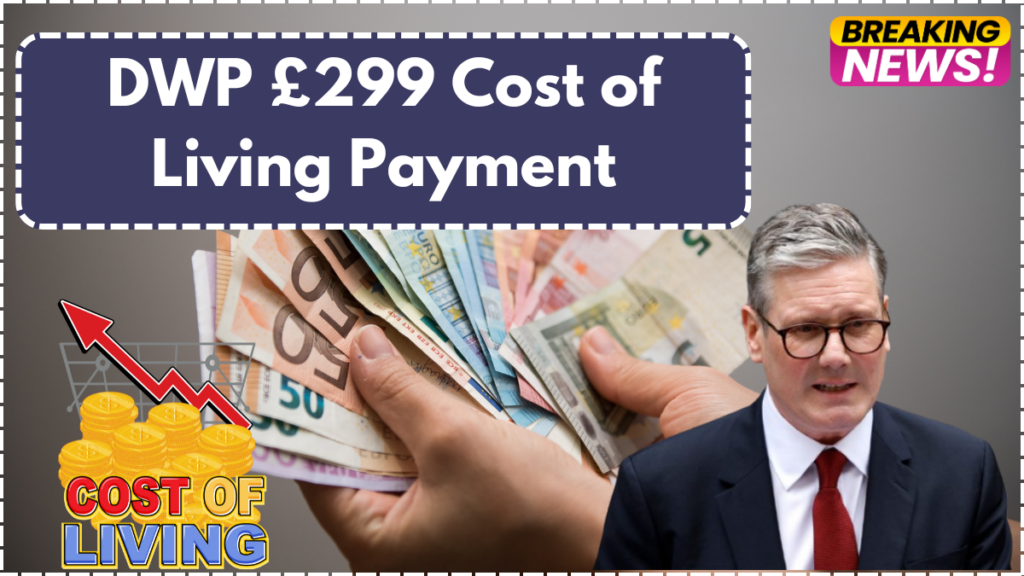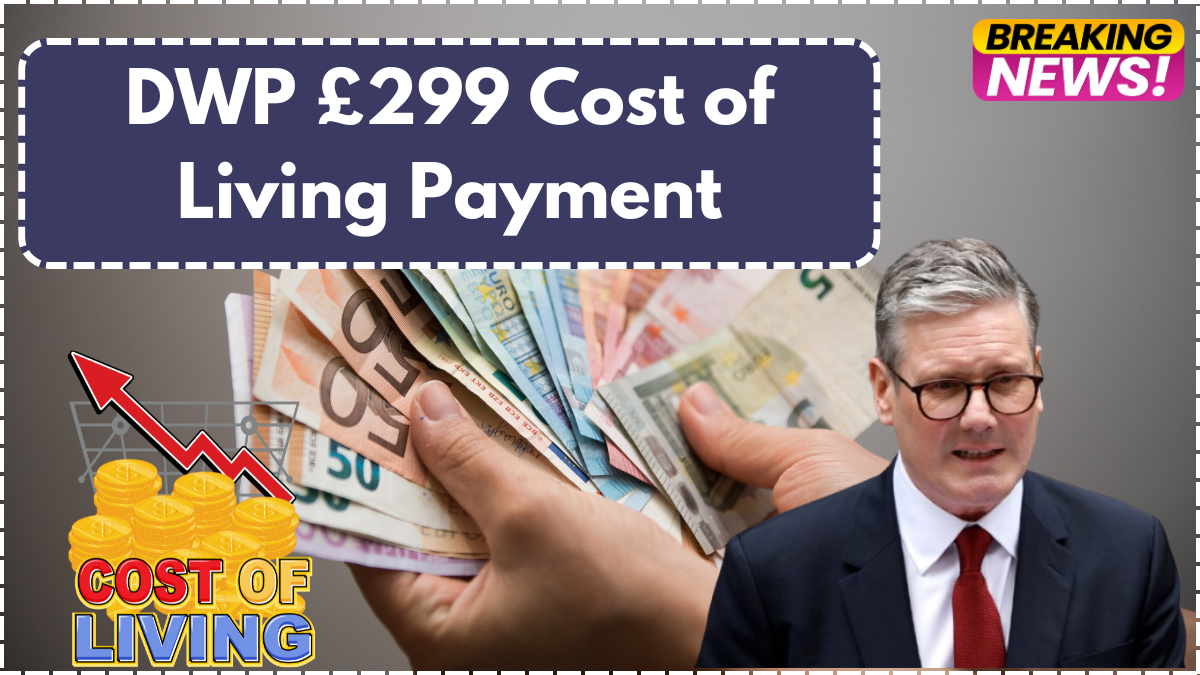As inflation continues to put pressure on UK households, the government remains dedicated to providing financial aid to those struggling to meet essential expenses. In April 2025, a £299 Cost of Living Payment was issued as the final installment of a three-part initiative aimed at helping low-income individuals facing rising food prices, higher energy costs, and increasing living expenses.
This payment is part of a broader £900 financial support package, which was deposited automatically into the accounts of eligible recipients between 6 April and 22 April 2025. However, not everyone received their expected funds, leading to confusion among claimants. If you are uncertain about your eligibility or wondering why your payment has not yet arrived, this guide covers everything you need to know.

Breakdown of the £299 Cost of Living Payment
The £299 Cost of Living Payment represents the final portion of the £900 government aid initiative, aimed at alleviating financial burdens throughout the 2024-2025 fiscal year. Below is a structured breakdown:
| Payment Installment | Amount | Payment Period |
|---|---|---|
| First Payment | £301 | Spring 2024 |
| Second Payment | £300 | Autumn 2024 |
| Final Payment | £299 | April 2025 |
This payment structure was implemented to provide continuous financial relief over the course of a year to those experiencing economic hardship.
Who Was Eligible for the £299 Payment?
To qualify for the £299 Cost of Living Payment, individuals must have been receiving at least one of the following means-tested benefits during the eligibility period (13 November to 12 December 2024):
- Universal Credit
- Income-based Jobseeker’s Allowance (JSA)
- Income-related Employment and Support Allowance (ESA)
- Income Support
- Pension Credit
- Working Tax Credit
- Child Tax Credit
If you continuously received any of these benefits throughout the specified period, the payment should have been transferred to your bank account automatically.
Who Did Not Qualify for the Payment?
Not all benefit recipients qualified for this financial aid. Individuals relying solely on the following benefits were ineligible:
- New Style Employment and Support Allowance (ESA)
- Contribution-based ESA
- New Style Jobseeker’s Allowance (JSA)
These benefits are not means-tested, meaning they do not specifically target individuals with lower incomes. Additionally, anyone who experienced a temporary break in benefit claims during the eligibility period may have been excluded from receiving the payment.
How Was the £299 Payment Distributed?
The Department for Work and Pensions (DWP) and HM Revenue & Customs (HMRC) managed the payments, depending on the type of benefit received:
- DWP-handled benefits were marked as “DWP COL” on bank statements.
- HMRC-managed benefits were labeled “HMRC COLS.”
There was no application process for this payment, as it was automatically issued to those who qualified.
What to Do If You Did Not Receive the Payment
If you were expecting the £299 Cost of Living Payment but it has not arrived, take the following steps:
- Check Your Bank Transactions – Look for an entry labeled “DWP COL” or “HMRC COLS” within the 6 April to 22 April 2025 payment window.
- Review Your Benefit Status – Confirm that you were receiving a qualifying benefit between 13 November and 12 December 2024.
- Report a Missing Payment – If the funds are missing, submit a claim on the GOV.UK website.
- Contact Your Benefit Provider – Speak with DWP or HMRC to verify your eligibility and confirm your payment status.
Late Eligibility and Backdated Claims
If you applied for Pension Credit after the eligibility period but before 5 March 2025, you might still qualify for the £299 payment, provided your claim was backdated to cover the relevant timeframe. To confirm eligibility:
- Ensure your Pension Credit application was submitted before the deadline.
- Contact DWP to verify your payment status.
- If your claim was approved and backdated, the payment should be issued automatically. If not, you may need to file a missing payment request.
Common Reasons for Delayed or Missing Payments
Several issues could have resulted in delayed or missing payments, including:
- Incorrect bank details registered with DWP or HMRC.
- Processing delays due to high volumes of transactions.
- Ongoing or rejected benefit claims that were unresolved during the eligibility period.
- Fraud prevention checks, which may have temporarily held up some payments.
If any of these apply to you, contact your benefit provider immediately to resolve the issue.
How to Avoid Cost of Living Payment Scams
Whenever government aid is distributed, scammers often attempt to exploit recipients. Protect yourself by keeping these points in mind:
- DWP and HMRC will never request personal or banking information via text, email, or phone calls.
- Avoid clicking on links in unsolicited messages claiming to be from government agencies.
- Always verify official information through GOV.UK before taking any action.
Frequently Asked Questions (FAQ)
1. Can I receive the £299 payment if I recently started claiming benefits?
If your benefit claim was backdated to cover 13 November to 12 December 2024, you may still qualify.
2. What should I do if I received only part of the payment?
Check with DWP or HMRC to ensure there are no issues with your claim.
3. Are there additional Cost of Living Payments planned for 2025?
As of April 2025, no further payments have been announced, but updates may be released later in the year.
4. How do I report a suspected scam?
Report fraudulent calls, emails, or messages to Action Fraud UK or via GOV.UK.
5. Can I appeal if I was deemed ineligible?
Yes, you can request a review of your eligibility status by contacting DWP or HMRC.
Click here to learn more
Pari is a passionate writer known for captivating stories that blend imagination and reality. Inspired by travel, history, and everyday moments, Pari crafts narratives that resonate deeply with readers.
